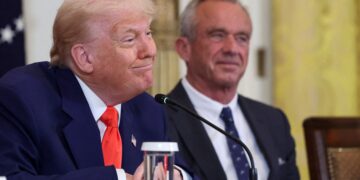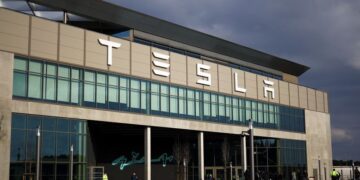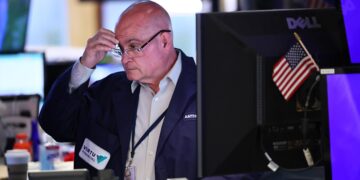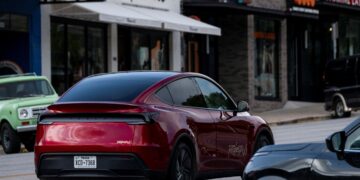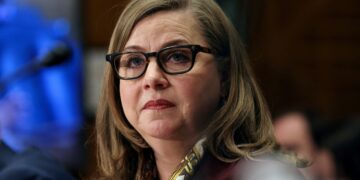Stockmarket carnage continues for offshore wind players. The most exposed, in more ways than one, is Orsted, the largest offshore wind turbine manufacturer. Since the end of 2020, the wind has stopped blowing in its turbines. And the further we go, the darker the picture becomes.
We have already discussed the Danish company’s situation many times in our columns. We also discussed Vestas a little while ago. For far too long now, Orsted shareholders have been forced to watch as the group’s prospects grow increasingly bleak with every earnings release, every broker analysis, and every stone thrown by Donald Trump and his administration on the subject of offshore wind power.
In recent quarters, Orsted has suffered a series of asset write-downs. Nearly $1.7bn in the latest report (12.1bn DKK), and there are good reasons to believe that this will continue when the figures are presented on 7 May.
Last week, US Secretary of the Interior Doug Burgum called for the immediate halt of Empire Wind, an offshore wind farm off the coast of New York. However, construction of the project, led by Norwegian oil company Equinor, began earlier this month. It was due to come online in 2027 with a capacity of 0.8 GW, roughly half that of an EPR nuclear reactor. Orsted also has two major projects in the region with Sunrise, with a capacity of 0.9 GW, and Revolution Wind with 0.7 GW. Trump and his administration have been uncompromising on wind power – both onshore and offshore – claiming that the technology is “harmful to the environment” and “too expensive.”
Another issue should be highlighted. Last week, Donald Trump’s team also published an executive order aimed at reviving the commercial fishing industry in the United States. The problem is that the order mentions that the sale of US fishing grounds to foreign offshore wind companies is a problem and undermines the country’s global dominance in seafood fishing.
These factors have only added to the pressure already exerted by the White House’s tariff policy. Tariffs on steel and aluminum could impact supplies to the groups concerned.
Project profitability in question
In addition to the problems of project delays and feasibility that these issues may cause, there are also capital expenditures that will undoubtedly need to be updated. Orsted had budgeted $6m per megawatt for the Sunrise Wind project in March 2024. Jefferies analysts estimate in a note that, with past write-downs, the cost per megawatt would have risen to $6.6m. These calculations do not include the possible effects of tariffs.
The problem for these players is that the increase in capital expenditure has a negative impact on the IRR (internal rate of return) of the projects. Further write-downs in Orsted’s figures published on 7 May, on the same scale as those for the previous quarter, would have an impact of 100bp on the IRR for the life cycle.
Sensitivity of the increase in capital expenditure on the IRR of Orsted’s Sunrise Wind project (source: Jefferies)

